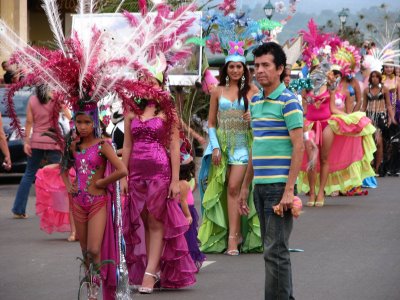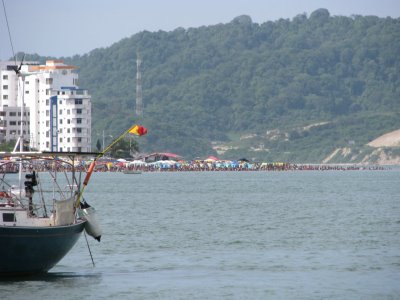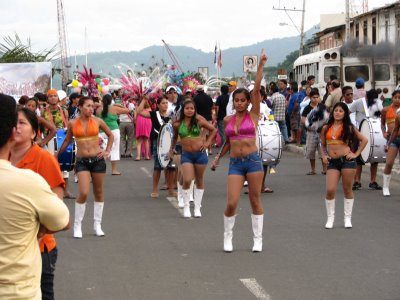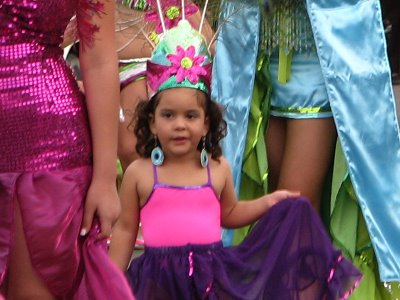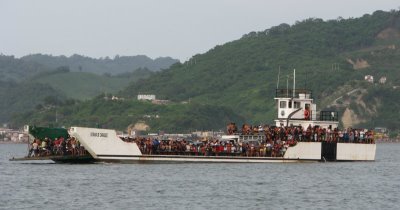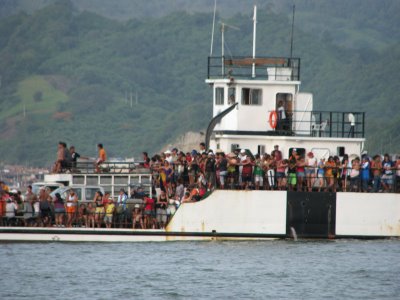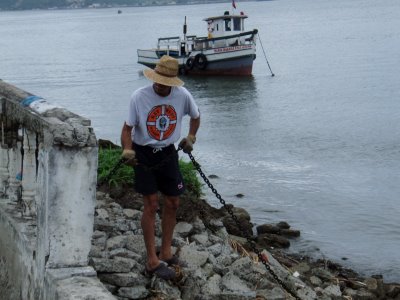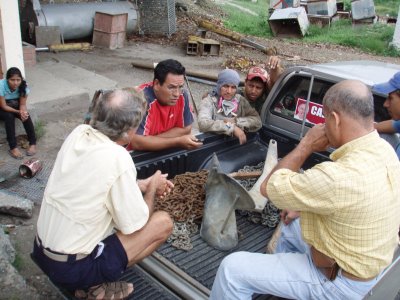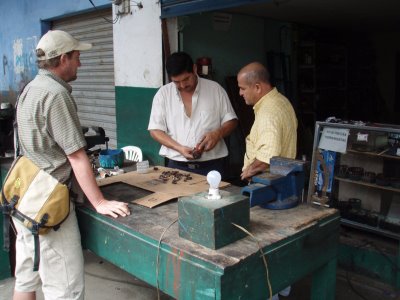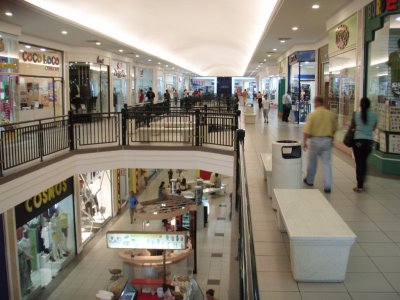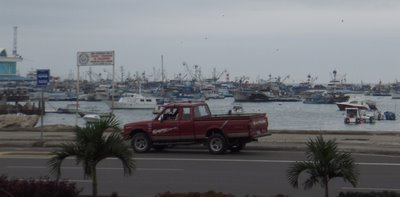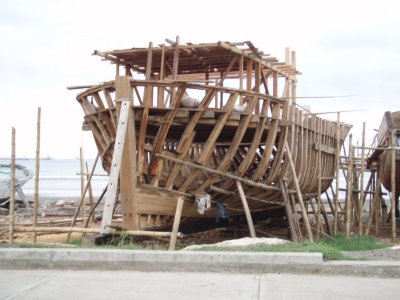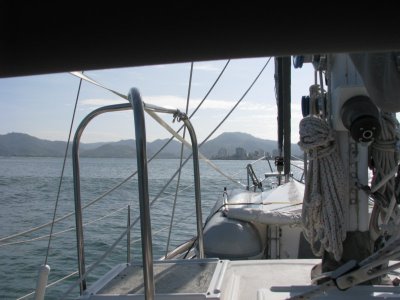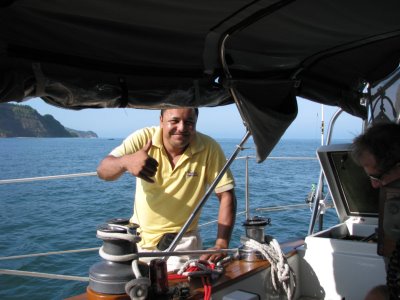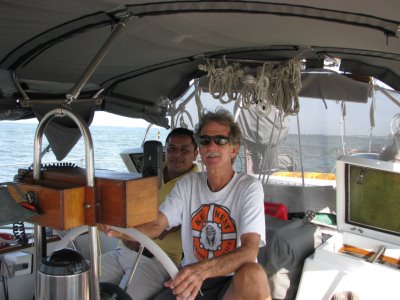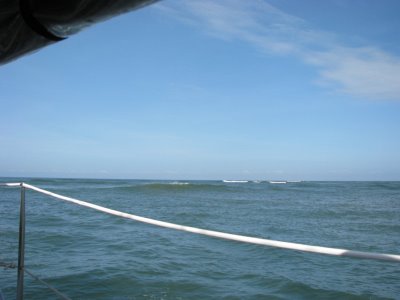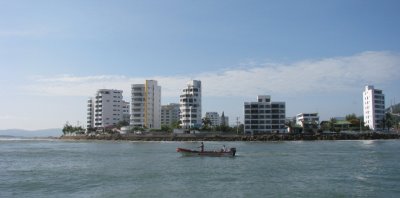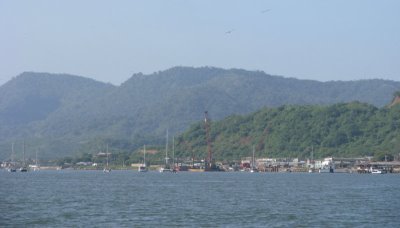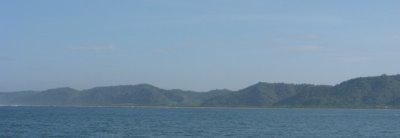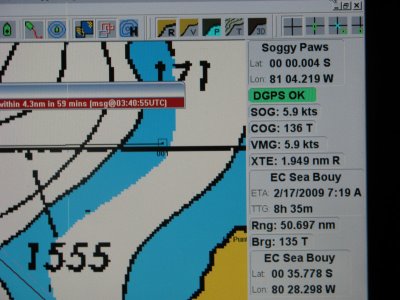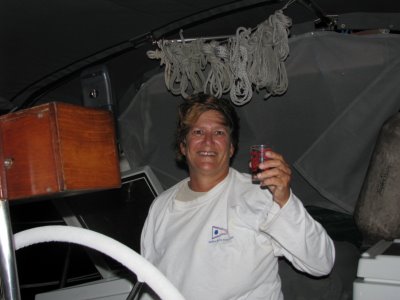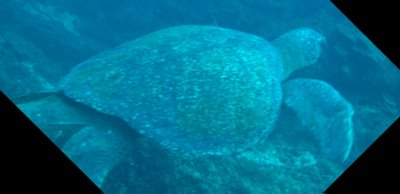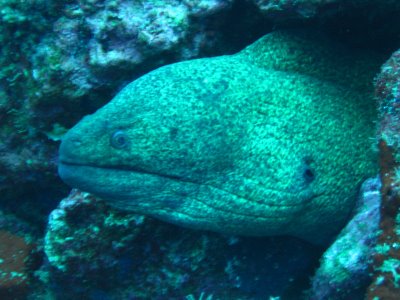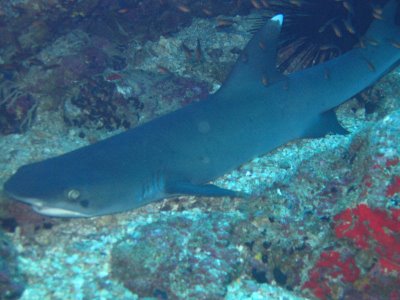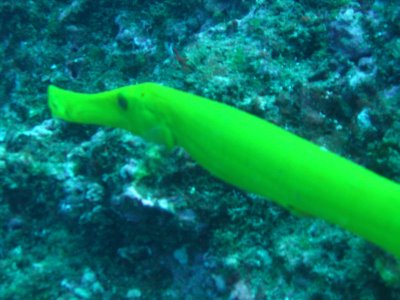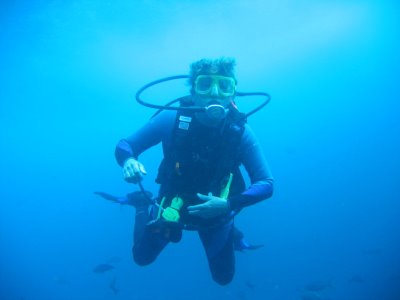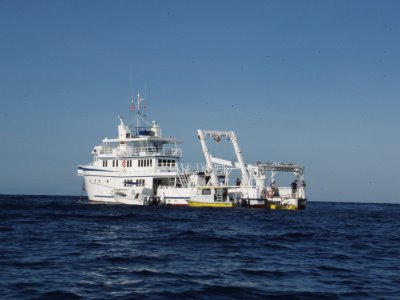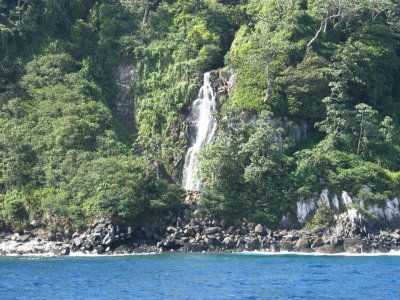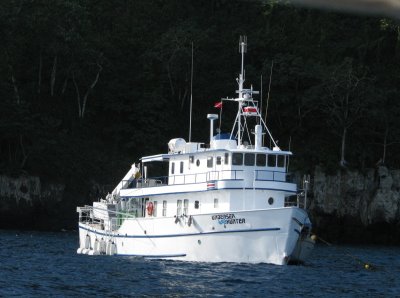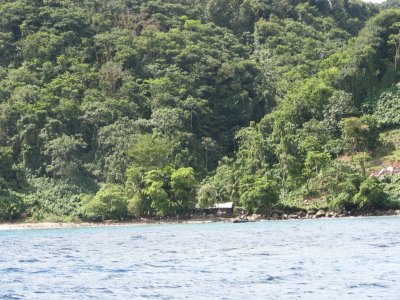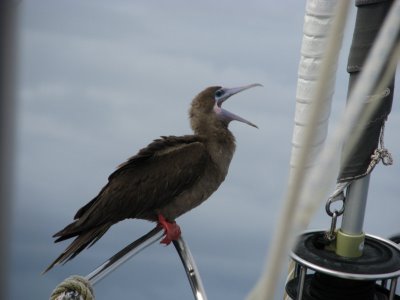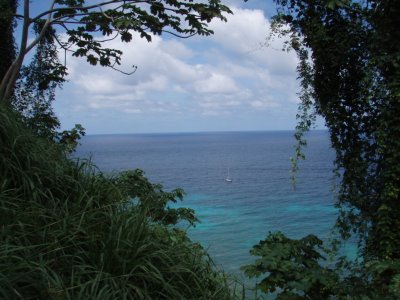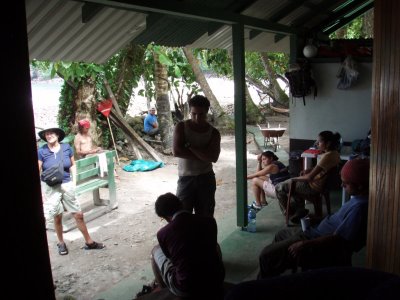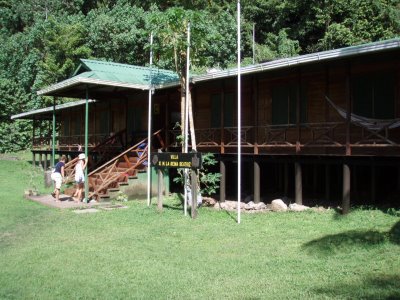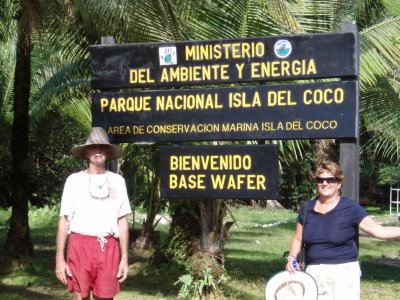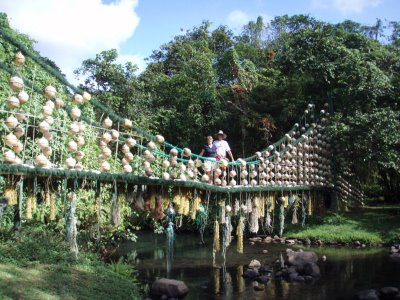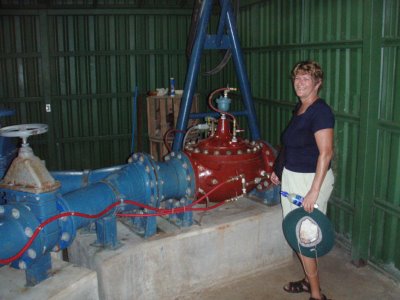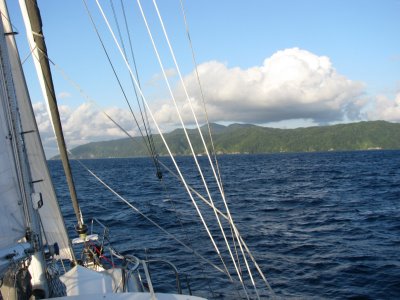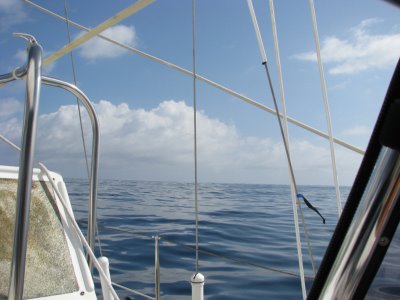We enjoyed a nice, relatively tranquil day yesterday in Bahia Iglesia. There is still a relatively large swell that is wrapping its way all the way around the island into our little bay, but as long as the wind is blowing steadily out of the north, it keeps our stern into the swell, and the motion isn't too bad.
We saw northerly winds of up to 23 knots yesterday, but by sunset they seem to have slacked off some, and were somewhat light through the night. With light winds, we do go sideways sometimes to the swell, but it is still better than conditions in the other two bays.
We took the day to do maintenance tasks aboard. But in the afternoon, we decided to try to land the dinghy ashore and hike to the waterfall we can see up the valley a little ways. With the swell, the surf on the rocky shore is pretty impressive. I suggested swimming in, but Dave watched for awhile with the binoculars and said we could land the dinghy between sets of waves. We did manage to get landed with the dinghy only half swamped, but then with only 2 of us, had trouble hauling the dinghy
up the steep rocky shore to safety. We did finally manage to drag it over the hump into the little pool of water created by the stream coming down the valley. We tied the painter to a high tree and left the dinghy floating. We knew it was a falling tide, so it would be OK when we got back.
We scared some wild pigs on the beach as we pulled the dinghy up. They are one of the few non-native species the Park is trying to deal with. The early exploring ships would purposely land pairs of pigs as they discovered new islands... to be a ready source of meat when they came back to the island. There are formerly British pigs all across the Pacific Islands.
It only took us about a half hour scrambling up the stream to get to the waterfall. Wow, what a beautiful place. The waterfall comes out of a cliff about 500 feet above us. In its fall into the pool below, the force is amazing, and creates a big misty wind in the little valley. We had trouble getting pictures without the camera lens getting fogged up. We posed for pictures and Dave took a swim in the pool (I am not fond of swimming in cold dark water). It is dry season here. Though the island
boasts 261 inches of rainfall a year, we have hardly seen a drop in the week we've been here. I can't imagine what this waterfall would be like in the middle of rainy season!
On our return to the beach an hour and a half later, we found the dinghy still floating in the little stream, but the stream was much higher up from the ocean...there was no surface channel going out of the stream into the ocean. The fresh water just disappears into the rocks. So we had to 'dig' a channel by throwing the big rocks out of the way, to make somewhat of a lower path to drag the dinghy up and over the hump and back down to the beach. Fortunately, we only had our 5hp motor, and we took
the gas tank and anchor out while we dragged. It took us about a half an hour, but we finally managed to get close to the water again.
It was an exciting launch into the surf and paddling canoe-style out through the first couple of breakers. We were again half-swamped, meeting the first couple of breakers, half breaking, head on. But we finally managed to get to calmer waters and get the motor started. It was worth it for the hike to the gorgeous waterfall, but would have been a lot easier with another pair of hands to help out.
The dive boat, Akeonos Agressor, that was anchored behind us the night before, had left at dawn. When we saw them come back into the bay again at sunset yesterday, we called to talk to them. They said they had been all the way around the island, and conditions were still very bad at the other two bays. So Dave and I congratulated ourselves on having stayed put.
Communications with the park are difficult from here, however. There is no VHF contact, the island is too high between here and there. We know that the two ranger stations communicate with each other using SSB 8325, so we tried that a few times, but got no response. We even tried using our Iridium phone, calling the numbers for the ranger station that was in the pamphlet they gave us. We got the 'Please try again later' message on the phone, that could mean anything from 'you don't know how to
dial an international call, stupid' to 'wrong number', 'busy', or whatever.
We did finally hear another conversation on the SSB, one side quite clearly, one of their patrol boats, we think. And though we couldn't hear the ranger station well at all, and we were speaking in Spanish, we think we got the message passed that we are in Iglesias Bay, we don't plan to try to go around Sunday to Wafer for the hike we had scheduled, and was there a way for us to get our 2 dive tanks back. (We hoped to have one of the patrol boats deliver them).
Dave, ever the optimist, thought after we shut the radio down, that it was settled that they would deliver the tanks. I wasn't quite sure.
So we sent an email to Isaac, the head Ranger's email address, to confirm. We did get a response back acknowledging our presense in Iglesia, telling us conditions were still bad in Wafer and Chatham, and not quite committing to sending our tanks back.
So we will wait here today, and if we don't see the patrol boat today, we will probably have to motor around to retrieve them tomorrow before we can leave. It is complicated because we do not have enough fuel to motor all the way to Ecuador, and it looks like we will have light and variable winds and a strong adverse current. (The Humboldt Current in this area is similar in strength to the Gulf Stream, in places, and we don't have a clear idea where it runs).
The conditions are forecast to moderate in the area starting today, and in a few days it will again be tranquil and very diveable. But we can't afford to wait, either time-wise or moneywise (remember, it costs $75/day to stay here).
We feel we accomplished our objectives here, we got to do some dives, we saw the hammerheads. We did 2 hikes in really lush conditions. It is time to move on.
